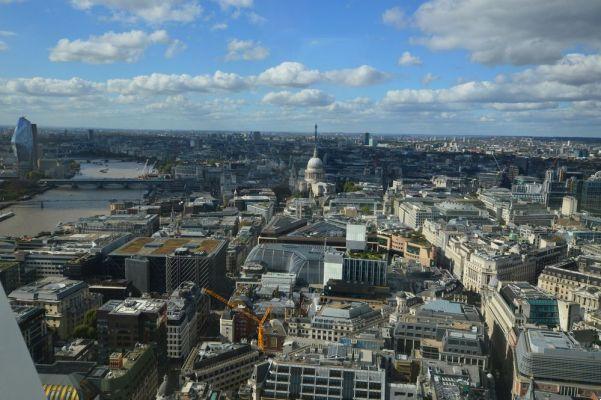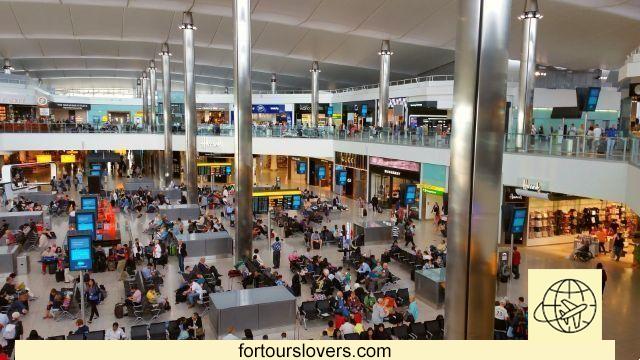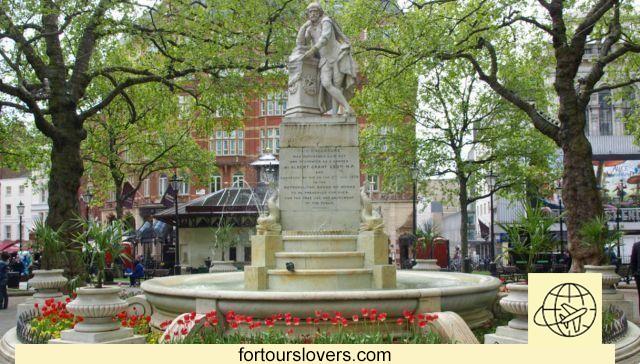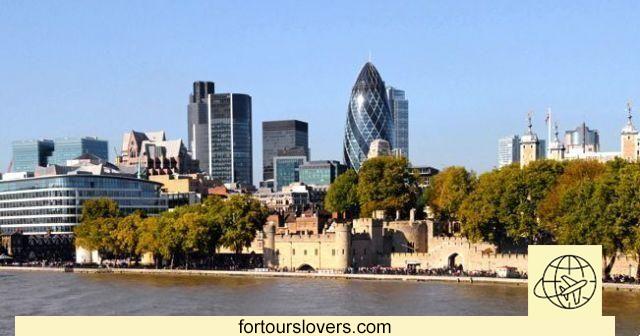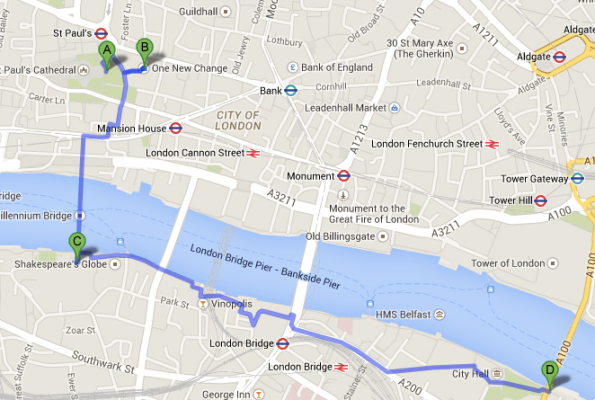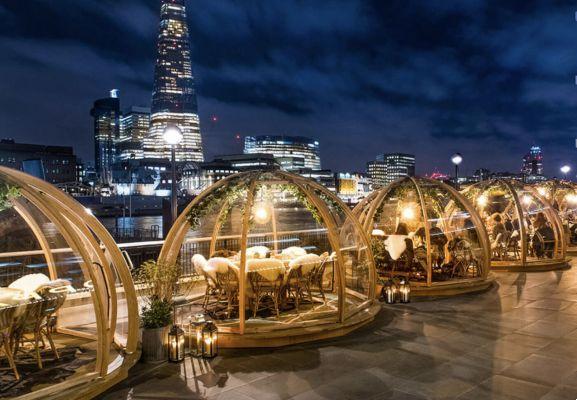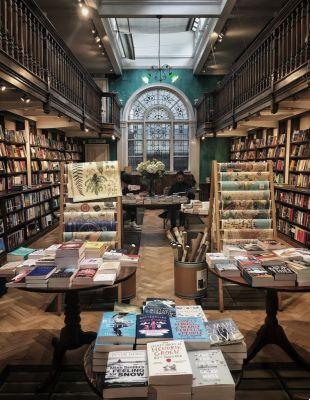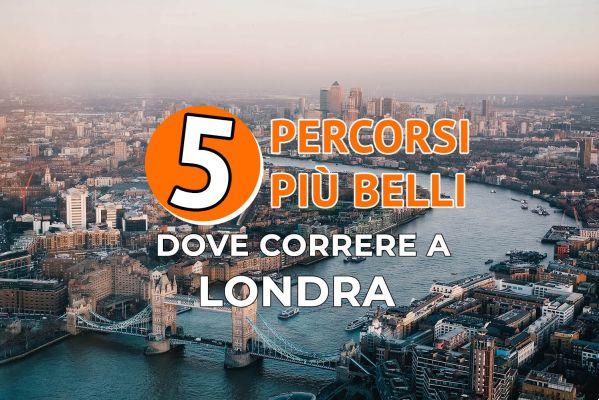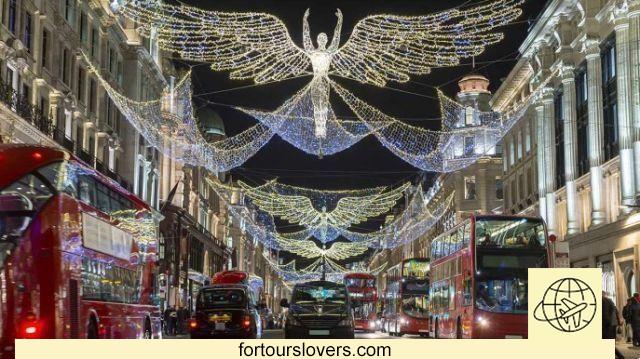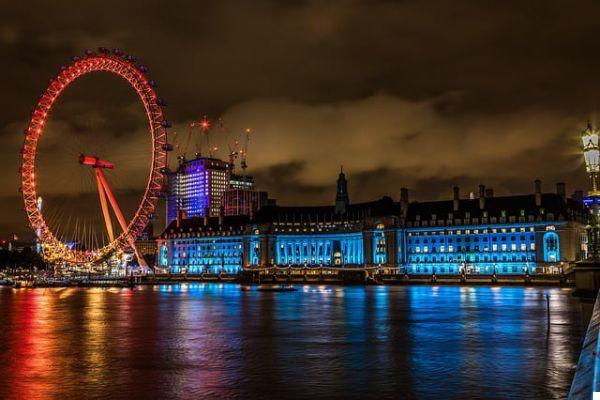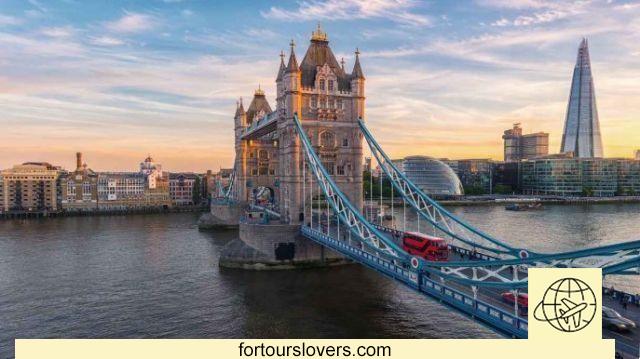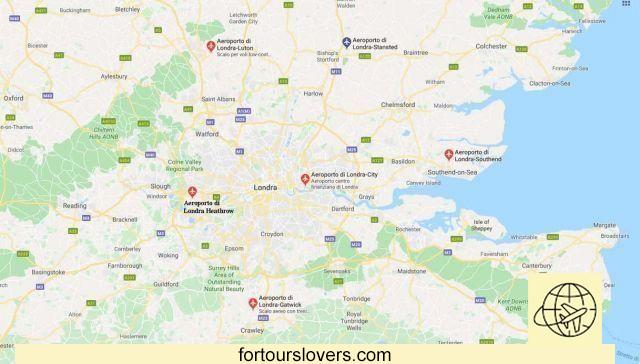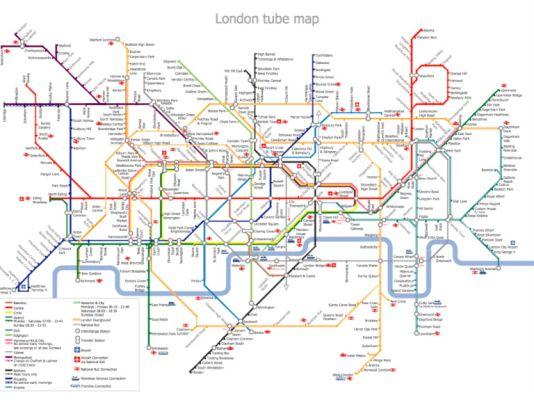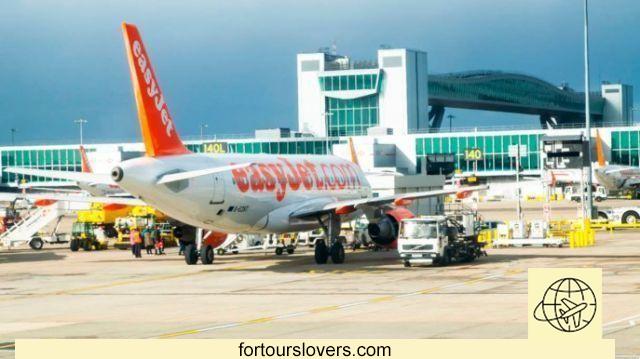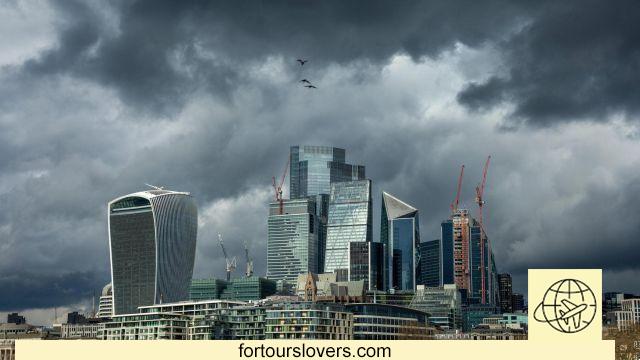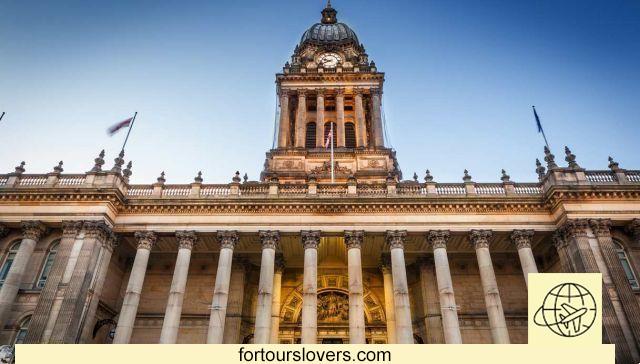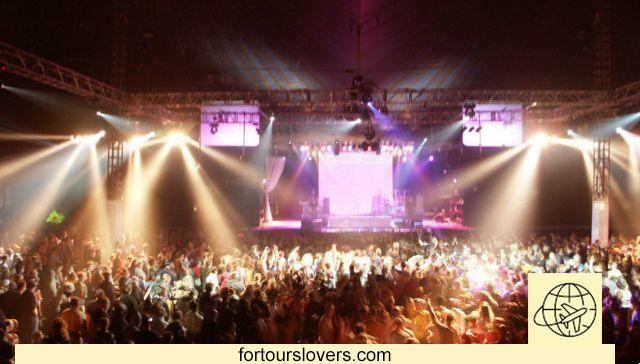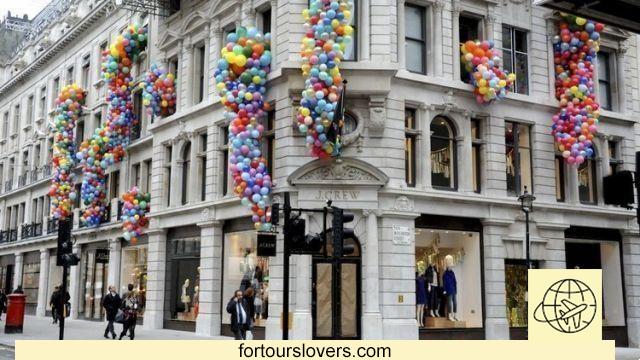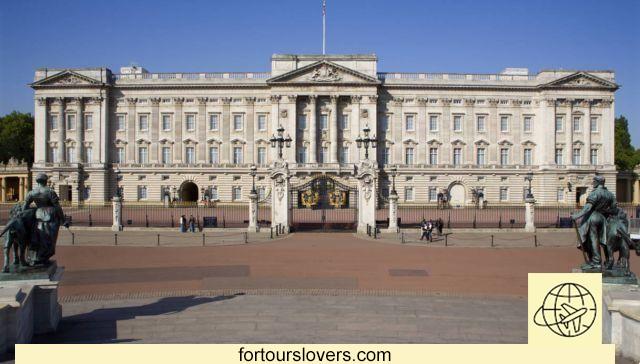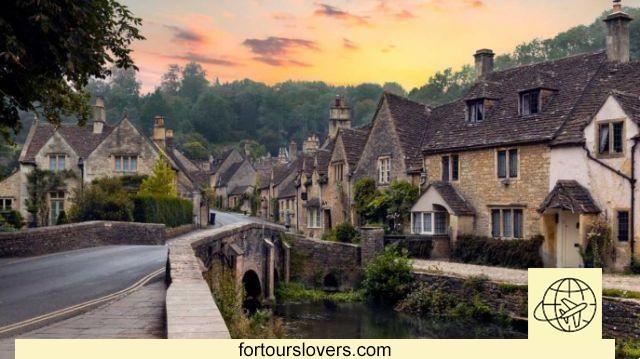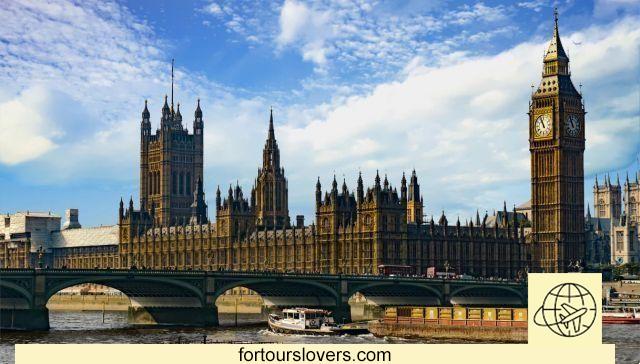
There is no shortage of monuments to see in London: cathedrals, royal palaces, skyscrapers with ultra-modern design. Get your camera ready!
Of Celtic origin, the name London tells us about a city that already existed in Roman times (then it was called Londinum) and that became the main political center of England in the 10th century, when the famous Westminster Abbey was also born. In just a few centuries, many of the monuments and buildings that can still be admired in London today flourished: the city became a prosperous center of trade and saw its population grow dramatically. Today London is a multicultural and full city that alternates between classic monuments and ultra-modern skyscrapers and, therefore, is capable of attracting all types of tourists.
Let's start our ideal tour of the monuments not to be missed in London with the most "classic" era. The imposing cathedral of San Pablo It is perhaps the main Anglican church in London and is dedicated to the apostle Paul. The design of St Paul's Cathedral dates back to 1668 to replace the old building that burned down during the Great Fire of London two years earlier and its interior is inspired by the Baroque. At least until the end of the XNUMXs, its dome was the tallest building in the capital and today tourists have to pay to enter.
The other great Anglican cathedral is the Abbey of Westminster, Without a doubt, one of the most famous monuments in London and seat of the coronation of English sovereigns. Located to the west of the Palace of Westminster, which is the seat of parliament, the church was built in the mid-16th century and has a Gothic-style façade. Inside, the tombs of English authors such as William Shakespeare, Chaucer and Charles Dickens are mixed with those of the most important British sovereigns and scientists such as Isaac Newton or Charles Darwin. Be careful not to confuse the abbey with Westminster Cathedral, which is much more recent and dedicated to Catholic worship.
If we told you that the Elizabeth Tower (or Clock Tower) is one of the most photographed monuments not only in London, but in the entire world, perhaps you would be perplexed. In fact, this is the official name of the spectacular Big Ben, whose first ringing dates back to July 11, 1859 and which, as of 2017, will unfortunately remain "silent" for at least three years due to a major restoration. It will still be possible to admire the almost 100 meter high tower and climb the 334 steps necessary to reach the clock hands.
Another classic monument to see in London is undoubtedly Buckingham palace, residence of the Queen since 1837 and where every day you can witness the famous changing of the guard to the delight of your children. Today, the palace is used so much for receptions that each year more than 50.000 people visit it as guests during state banquets alone. If you choose to visit Buckingham Palace, there are different types of tickets available for a truly personalized experience (but don't miss the State Rooms).
For lovers of modernity, London offers numerous monuments to see even in the center. Starting with Piccadilly Circus, a real pulsating node created to connect Regent Street with the theaters of Shaftesbury Avenue and which has now become one of the biggest attractions to photograph in London. Like Times Square in New York, here the attention is also captured by the lights and the large display mounted on the building on the corner where advertisements of all kinds are projected. Easily accessible by tube, nearby are the Criterion Theater and the fountain topped by the statue of the Greek god Anteros (often confused with Cupid) dedicated to the philanthropist Lord Shaftesbury.
London's skyline also follows the city's destiny and is constantly changing. If you like ultramodern buildings and skyscraper Don't miss The Shard, a real ray of light designed by Renzo Piano and located near London Bridge, while in the City area you will find 30 St Mary Ax, known by the English with the affectionate nickname of "cucumber ". Without forgetting the Heron Tower, Tower 42 or the “Walkie-Talkie” at number 20 Fenchurch Street.
Among the works created to celebrate the new millennium we find the spectacular London Eye ferris wheel that has rightly earned access to London's most famous monuments, especially thanks to the millions of visitors who choose it every year to take unforgettable photographs of the panorama of London. the city. (But if you want an even higher vantage point, the panoramic terrace on the Shard's 72nd floor is the place for you.) Don't forget to cross the Thames on the Millennium Bridge which, after a somewhat shaky start, has regained popularity and will allow you to take beautiful photographs of St Paul's Cathedral.
In case of rain, London is home to over a hundred museums, many of which are free and kid-friendly. Some are true monuments like the National Gallery which exhibits more than 2.000 works ranging from Giotto to Van Gogh and Renoir and is located a few steps from Trafalgar Square with the statue of Admiral Nelson atop a pillar more than 50 meters high. The British Museum is undoubtedly the most visited museum in London and it could not be otherwise since it houses masterpieces such as the Rosetta Stone and the Parthenon marbles. Finally, if you love books, don't miss a visit to the famous British Library, where the Magna Carta and a copy of the Bible, the first book printed by Gutenberg with movable type, are on display.
Perhaps they are not really among the most "classical" monuments, but markets London attracts thousands of tourists every day. Whether it's Camden Market shopping for vintage clothes or Portobello Road in Notting Hill, there are stalls to suit all tastes (and budgets). Don't miss, however, a trip to Covent Garden Market to take a photo of its picturesque iron arches and end your day of shopping with a stop at Harrods, the most famous department store in the world.




